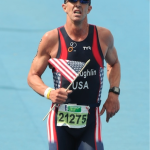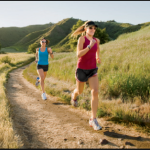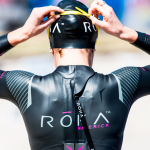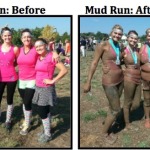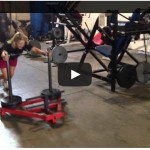
Summary of keynote presentation by Alex Hutchinson
By Melissa Mantak, MA, November 2019
I recently attended the TrainingPeaks Endurance Coaching Summit in Boulder. One of the keynote speakers was runner and researcher, Alex Hutchinson. (Learn more about him and his blogs and books: www.alexhutchinson.net and www.sweatscience.com)
His latest book is called “Endure mind, body, and the curiously elastic limits of human performance”. His talk was eye opening and inspiring. This article is based on his keynote speech from the coaching summit.
What defines our outer limits? What is holding us back? Can we change these limits?
Both the mind and the body influence our limits as endurance athletes. The brain acts in a protective capacity by telling you to stop if it senses you’re going too far or too hard. When our muscles fatigue, we feel a sense of increased effort and we then make the decision to slow down or to stop. But, can we alter this sense of effort by using “other stuff”, such as coffee that can influence our subjective perception of effort?
Here are some concepts that can help you manipulate your sense of effort:
Facial Feedback Hypothesis
This theory works like this: If I’m happy, I smile. But, if I smile when I’m feeling bad, I will also feel better. How we feel is influenced by what is going on in the mind. When we feel good emotionally, everything feels easier.
Environment Matters
When you’re surrounded by people that support you and what you’re doing, you have a greater sense of well being, thus your perception of effort decreases.
Brain Stimulation Technology
This is where technology comes in and the science is strong. There is a device that can tweak the brain to change our limits of perceived effort. A weak electrical current is applied to the brain to influence and alter perception of effort in one specific area of the brain. Rating of perceived effort is easier with specific brain stimulation. (www.haloneuro.com)
Altitude
(this is where increased effort applies – opposite effect)
Here’s one reason why training, racing or being at altitude feels harder. When at altitude, our rate of breathing increases and our perceived effort increases. Because of the increased rate of breathing, we can overestimate how hard we’re working.
Harness The Pack
Pain tolerance can double when exercising in the company of a group or team. Your ability to sustain a given pace or effort feels easier and more doable when done in the presence of others.
Rest Your Brain
Mental fatigue increases your sense of physical effort. Mental freshness enhances physical performance. This is where regular recovery and taper are important for your ability to train and race hard.
Build your belief
Belief is the true performance enhancer. Be aware of your internal self-talk. Do you really believe you can complete that workout or achieve a race PR? In one study, athletes repeated: “this is the moment I’ve trained for” through training and racing. Their endurance increased by 39%. Eliud Kipchoge who just broke the 2 hour barrier in the marathon, tapped into the power of his mind to achieve this ultimate goal. Two other runners in the Nike program weren’t as strong mentally and ultimately allowed Kipchoge to be the first.
Music doping
This is one most of us have used and known for a long time. Listening to your favorite, motivating music helps you feel better and perform better.
The power of your mind can work strongly against you or strongly for you. Believe.
